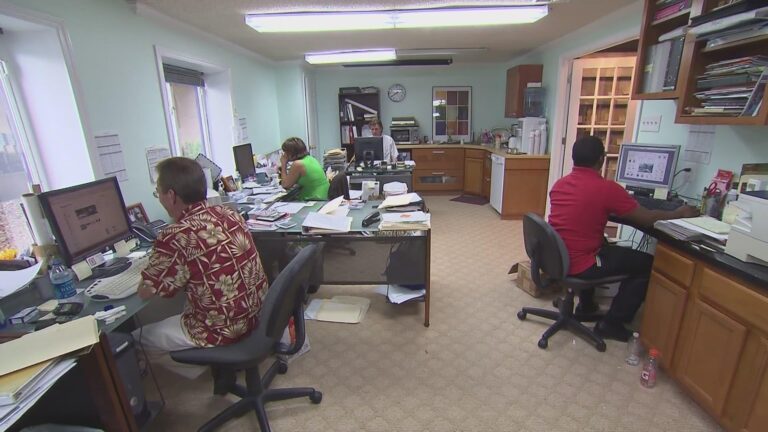Dallas Sets the Pace for Workforce Return to Office in the U.S.
Dallas: A Trailblazer in Reestablishing Office Presence
Among major metropolitan areas across the United States, Dallas has distinguished itself as the frontrunner in bringing employees back to physical office settings. Recent data indicates that Dallas boasts the highest proportion of workers resuming on-site duties, outpacing cities like New York, San Francisco, and Chicago. This resurgence not only signals the city’s economic vitality but also reflects a strategic shift by companies prioritizing in-person collaboration to enhance productivity and innovation.
Driving forces behind Dallas’s leading return-to-office rates include:
- A robust corporate ecosystem embracing hybrid work models that encourage regular office attendance.
- Significant investments in state-of-the-art office environments designed to prioritize employee health and comfort.
- Proactive municipal policies offering incentives that foster business expansion and workforce retention.
| City | Percentage of Employees Back On-Site | Remote Work Adoption Rate |
|---|---|---|
| Dallas | 78% | 22% |
| New York | 62% | 38% |
| San Francisco | 59% | 41% |
| Chicago | 65% | 35% |
Economic Revival Fueled by Office Reopenings in Dallas
The revitalization of in-person work in Dallas is generating substantial economic benefits, particularly for sectors that rely heavily on daily commuter traffic. Hospitality venues, retail shops, and public transportation services have all reported marked improvements as office workers return to downtown areas. For instance, eateries near business districts have seen lunchtime patronage increase by over 30% compared to the previous year, while transit ridership has rebounded by nearly 40%, according to recent city transportation reports.
Key economic outcomes linked to this workforce reintegration include:
- Growth in small business revenues: Establishments such as coffee shops and laundromats catering to office employees are experiencing steady sales growth.
- Stabilization and growth in commercial real estate: Leasing activity for office spaces has surged, bolstering property values and encouraging new developments.
- Expansion of job opportunities: Increased demand for facility management, security personnel, and local service providers is creating new employment avenues.
| Industry | Impact Before Return | Growth After Return |
|---|---|---|
| Hospitality | -15% | +25% |
| Retail | -10% | +20% |
| Transportation | -30% | +40% |
Obstacles Dallas Employers Encounter Amid Workforce Transition
Despite the positive momentum, Dallas businesses face several challenges in managing the shift back to office-centric work. A significant concern is retaining talent, as many employees have grown accustomed to the autonomy and convenience of remote work. Abrupt mandates to return without flexibility risk increasing turnover rates. Additionally, ensuring workplace safety remains a priority, with companies investing in enhanced ventilation systems, enforcing mask policies, and conducting regular health screenings to address employee apprehensions.
Rebuilding a cohesive workplace culture after prolonged remote operations has also proven complex. Employers report difficulties in restoring team synergy and combating burnout associated with the transition. To address these issues, Dallas organizations are:
- Redesigning office layouts to accommodate hybrid schedules and promote safe interactions.
- Upgrading digital tools to support seamless collaboration between in-office and remote staff.
- Implementing flexible work policies to balance employee needs with business objectives.
- Offering mental health resources to support workforce well-being during adjustment periods.
| Challenge | Effect | Employer Strategy |
|---|---|---|
| Employee Retention | Potential increase in resignations | Flexible scheduling options |
| Health & Safety | Higher operational expenses | Enhanced cleaning and safety measures |
| Team Cohesion | Reduced collaboration | Organized team-building activities |
| Technology Limitations | Lowered efficiency | Investment in advanced communication platforms |
Effective Approaches to Maintain Employee Engagement Post-Return
As Dallas continues to lead the nation in office reoccupancy, sustaining employee engagement remains a critical focus. Organizations are adopting transparent communication channels to keep staff informed about policy changes and to solicit ongoing feedback. Balancing in-person collaboration with flexible work arrangements helps employees feel respected and motivated. Public recognition of achievements further strengthens morale and loyalty during this period of adjustment.
Incorporating wellness programs and career development initiatives also contributes to a more engaged workforce. The following strategies have proven effective:
| Strategy | Objective | Outcome |
|---|---|---|
| Hybrid Work Models | Blend remote and office work | Enhanced work-life harmony |
| Wellness Initiatives | Promote physical and mental health | Lower burnout rates, increased productivity |
| Professional Development | Foster skill growth | Greater job satisfaction and retention |
| Recognition Programs | Celebrate employee contributions | Improved team unity |
- Encourage continuous dialogue between leadership and employees.
- Utilize technology to facilitate collaboration and engagement.
- Design office spaces that inspire creativity and teamwork.
Conclusion: Dallas as a Model for Post-Pandemic Workforce Reintegration
Dallas’s leading role in the return of employees to office environments exemplifies a broader shift in workplace dynamics across the United States. This trend underscores the city’s importance as an economic powerhouse and highlights evolving perspectives on the value of in-person work. Observers will be keenly watching how sustained office attendance influences local commerce, commuting behaviors, and the commercial real estate landscape in the months and years ahead.







